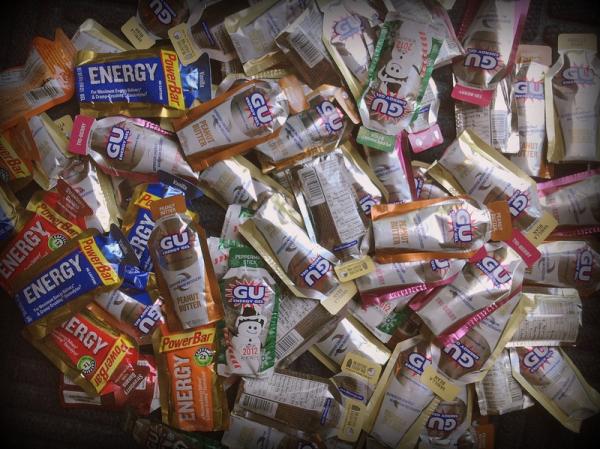My first marathon is quickly approaching. In the last few months of training, I have learned a few things. But, with only six weeks to go, I need to learn a lot more.
In my previous "marathon lessons" article, I dug into the omnipresent advice to use Epsom salt to cure sore muscles. It turns out that although Epsom salt is a staple of sore muscle recovery, there is not a lot of science to back it up.
Now, I turn my attention to those gel packs that serious runners swear by. What are they are do I need them?
The packs are called energy gels (also known as "goo") and were developed in the late 1980s in the UK. They are a concentrated source of energy - single servings of gel that contains a shot of carbohydrates - with very little of anything else.
They are designed to 1) be quickly and easily digested 2) give a boost of energy and 3) delay muscle fatigue.
Our muscles rely on glucose for energy. Glucose is stored in the form of glycogen - a multibranched polysaccharide of glucose - in the body. But, the body can only store so much - enough to fuel about 1.5 - 2 hours of running. Eating a gel is a quick way to give the body the energy it needs to keep going - especially if the marathon is going to take as long as I think that it might (~ 5 hours - ugh!)
That said, it is important not to overload the body with goo. There is a limit as to how much glucose can be absorbed at one time, so, eating too much goo is only going to lead to a bunch of goo sitting in your stomach without the energy coming from it.
In fact, because gels are very concentrated in carbohydrates, they’re difficult for the stomach to absorb. Water helps the body absorb the fuel. Some runners recommend taking the goo with water to allow the stomach to efficiently break down and absorb the carbohydrates.
What is in goo?
Many different companies make goo - but they are all more or less the same product - with slight differences. Most goo has around 100 calories, carbs (21-25 g) and some electrolytes (sodium and potassium (around 40-50 mg each.)
The sugar components are generally maltodextrin - which provides glucose to your bloodstream - sometimes in combination with fructose. Some think that a combination of glucose and fructose in a 2:1 ratio can lead to a higher uptake of carbohydrate than glucose alone. Because glucose raises blood sugar immediately, and fructose raises it more gradually, the combination can be good for long-distance running.
How many do I need in one marathon?
The suggestion for goo intake is to eat 1 gram of carbohydrate per Kg of bodyweight per hour.
So, if I am about 54Kg (120 lbs.), I can absorb 54 grams of carbohydrate in one hour. Since each goo has about half that amount, I am looking at two goo/hour.
Tips from the top
Some runners have very specific routines for their goo intake. Whatever your method, here are some tips that most marathoners agree upon.
Only take goo during a run - not before. Because goo works almost immediately, it is recommended to only take them when exercising - and not in preparation of exercising. If the goo hits a body that is not exercising, the body will release insulin and lower blood sugar - leaving you feeling sleepy.
Some goo contains caffeine (a known performance enhancer) and others do not. Having caffeine falls into more of a personal preference, but, it is good to know if the goo that you are choosing has it or not.
Do not try these out on race day! Every runner suggests taking different brands out on a test run and trying them out before the big day. As an aside, they generally taste terrible (incredibly sweet) and can be hard on the stomach. So, testing them out during training runs so that you can pick the best one for your body is the way to go.




